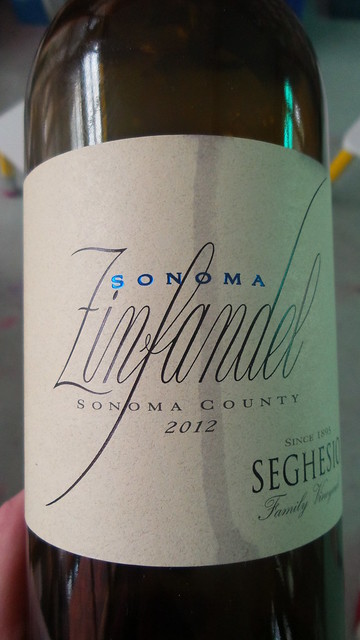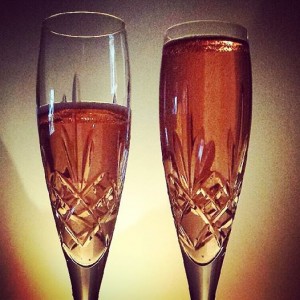I’ve written about the Seghesio Old Vines Zin before but today we look at the entry level Sonoma County Zin. In the States, this retails at $US24, here in Australia you’re looking at the mid-$40 mark.
For me, Seghesio is a reliable Zinfandel producer. Having drunk (sorry, tasted) the a few of the wines on several occasions now they are always cracking, exemplary examples of both grape and style. If anyone ever said to me “I want to try an American Zinfandel” I’d recommend Seghesio without batting an eyelid.
Zinfandel is a Croatian grape variety (very handy piece of wine trivia that one!) and in the incomparable Wine Grapes it is listed under its snappy Croatian name … Tribidrag. It has a few synonyms but the ones you’re most likely to encounter are Zinfandel (California) and Primitivo (Puglia, Italy). There’s quite a twisty turny grape DNA story about how Tribidag, Primitivo and Zinfandel came to be identified as one and the same and for the purposes of today’s didactic content – let’s just content ourselves with the end conclusion.
Today, we find the grape growing in Croatia and some of the other countries of the former Yugoslavia, along with the US (principally California), Israel, Canada, Mexico, South Africa and even France. It’s becoming increasingly widespread in Australia too – once upon a time it was WA’s Cape Mentelle all the way if you wanted an Australian Zin but there are now producers seemingly everywhere (Kangarilla Rd pops to mind without even thinking too hard!).
In the glass the wine is an intense and deep purple – this is obviously a young wine! The nose is reasonably pronounced, showing lots of black berry fruits, black cherry, some warm spice and vanilla and even some fruitcake.
On the palate, there is all that black fruit again – most particularly the black cherries. There’s also the vanilla and good acidity which helps balance out all the fruit bomb sweetness. The palate is more complex than the nose – with licorice and milk chocolate showing too. The tannins are fine and soft. The length isn’t bad although the complexity drops off reasonably quickly and it becomes all about the black cherry fruit.
This wine is just a touch hot – the alcohol is definitely noticeable and given the wine’s rather linear finish it does rather stick out. These two factors (alcohol and finish) push me towards good rather than very good.
If you’re looking for an introduction to American Zinfandel this is a great start (even with the alcohol – that’s a big part of US Zins!) – especially if you can’t track down or afford the Old Vines.
Edinburgh Cellars.
Cork.
14.8% abv.

